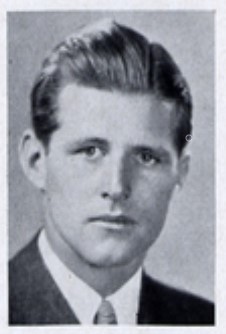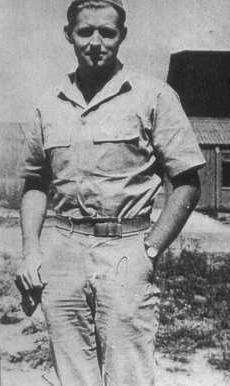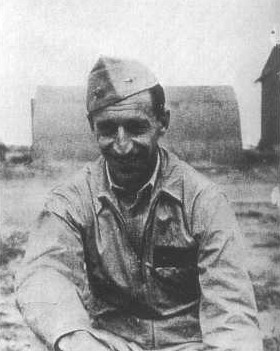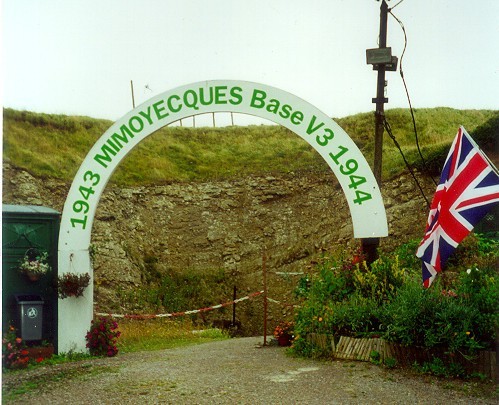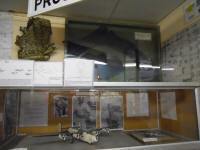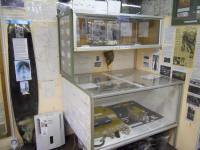Joe Kennedy and the INK tour (VE Day @ NASAM)
As we approach VE Day, Friday 8th May was to have seen a new venture at the Norfolk and Suffolk Aviation Museum. INK ** were taking their play about Joe Kennedy on tour and the museum was the venue for one performance. The good news is that we have already agreed to host a performance next year. INK will decide whether to run with the Joe Kennedy story, or a new play, nearer the date. Watch this blog, and our Events page for details.
In the meantime, we thought that you might like some background to the story we would have told. This is adapted from our web site. Further information on Project Anvil, and Joe Kennedy’s part in it, is on display in the museum.
Plus we have news on a Virtual VE Day 75 Celebration at the foot of this blog.
Lt. Joe Kennedy
 Joseph Patrick Kennedy Jr was the elder brother of John F. Kennedy, a decorated U.S. Navy Lieutenant who served with distinction on motor torpedo boats. Joseph was born on the 28th July 1915, and completed his flight training at Jacksonville, U.S.A. in 1942. As a volunteer U.S. Navy pilot, he flew Mariner flying boats from Puerto Rico, Central America, before converting to the B24 Liberator and was based at Dunkeswell, Devon, with squadron VP110. After completing his normal combat tour, he volunteered for an extra 10 missions, somehow managing to talk his crew into flying with him. On completion, he volunteered for one final top secret mission, which would involve low-level flying and a parachute jump. This was part of Project Anvil – the target being the German V3 Supergun site at Mimoyecques in France.
Joseph Patrick Kennedy Jr was the elder brother of John F. Kennedy, a decorated U.S. Navy Lieutenant who served with distinction on motor torpedo boats. Joseph was born on the 28th July 1915, and completed his flight training at Jacksonville, U.S.A. in 1942. As a volunteer U.S. Navy pilot, he flew Mariner flying boats from Puerto Rico, Central America, before converting to the B24 Liberator and was based at Dunkeswell, Devon, with squadron VP110. After completing his normal combat tour, he volunteered for an extra 10 missions, somehow managing to talk his crew into flying with him. On completion, he volunteered for one final top secret mission, which would involve low-level flying and a parachute jump. This was part of Project Anvil – the target being the German V3 Supergun site at Mimoyecques in France.
On the 31st July 1944, his U.S.Navy special air unit moved from Dunkeswell to Fersfield in Suffolk. The mission involved flying an explosive-laden PB4Y-1 Liberator bomber. The crew of two, Lt. Joe Kennedy (pilot), and Lt. Wilford John Willy (radio control technician/co-pilot), were to take off with 21,150lbs of Torpex on board and establish radio control by a Ventura mother-ship. Once full control had been gained and tested, the crew would parachute to safety over land at a pre-determined point, leaving through the nose wheel bay emergency exit. The bomber would then continue the rest of its flight as a drone, and be directed to crash onto the target.
 Wilford John Willy was born on the 13th May 1909. He had volunteered for the U.S. Navy in 1933 as an Able Seaman and worked his way up through the ranks, studying electronics and becoming an expert in radio-controlled systems for top secret U.S. Navy weapon projects. He also became a pilot and was certified to fly various aircraft including the B24 Liberator. Lt. Willy had not seen active duty during the war because of his involvement with top secret projects. He designed most of the weapon system for the Liberator drone in which he would eventually die – he had pulled rank on Lt. Kennedy’s co-pilot (Ensign Simpson) because he was determined to do all he could to ensure Project Anvil was a complete success.
Wilford John Willy was born on the 13th May 1909. He had volunteered for the U.S. Navy in 1933 as an Able Seaman and worked his way up through the ranks, studying electronics and becoming an expert in radio-controlled systems for top secret U.S. Navy weapon projects. He also became a pilot and was certified to fly various aircraft including the B24 Liberator. Lt. Willy had not seen active duty during the war because of his involvement with top secret projects. He designed most of the weapon system for the Liberator drone in which he would eventually die – he had pulled rank on Lt. Kennedy’s co-pilot (Ensign Simpson) because he was determined to do all he could to ensure Project Anvil was a complete success.
At 5.59pm August 12 1944, after all the accompanying aircraft had taken off from Fersfield airfield, Lt. Kennedy lined up the Liberator (serial 32271) on the main 6,000ft runway. After making a text book take-off he slowly climbed to the operating height of 2,000ft and continued to fly on the planned course, forming up with the rest of the formation over Halesworth, Suffolk. The formation consisted of two Ventura motherships (if there were a problem with one, the second could assume radio control of the drone once the crew had bailed out), one P38 camera aircraft, 4 Mustangs from the 20th Fighter Group as low level escort, one B17 filming, and two American Mosquito aircraft on detachment from the 25th Bomb Group Photographic Wing as observers. Once the formation had cleared Halesworth, the Liberator was switched from manual flight to radio control and the pilot in the Ventura mothership executed test turns under full control. Lt. Kennedy, now flying as a passenger, radioed the codename “Zoot Suit” to tell the other crews that everything was fine. Lt. Willy then switched on “Block”, which was the codename for the TV camera in the nose, used to guide the drone onto the target. Two minutes later the drone suddenly exploded over New Delight Wood, Blythburgh, Suffolk – the wreckage was scattered over an area approximately 3 miles long and 2 miles wide. 3 square miles of heath land were set on fire, 147 properties – some up to 16 miles away – were damaged, and hundreds of trees in New Delight Wood were felled as a result of the blast. Despite all this, no civilians were killed.
The cause of the explosion has never been established but could have been due to a lack of electrical shielding on “Block”, which caused electro-magnetic emissions to open up a relay solenoid that should have been closed; this would have activated one of the MK9 detonators, which in turn would have set off the load of Torpex. The details of this mission remained secret until 1966; the names of the crew members were not disclosed until 1970.
Images relating to the full story (click to enlarge)
Taken from research work done by Ian Hancock and Trevor Jermy More details on the NASAM main website @ Lt. Joe Kennedy
INK** INK is an East Anglian based Theatre Company and registered charity About INK
As the museum will not be open for VE Day as we planned, we recommend the Virtual VE Day being provided by the Royal Air Force Museum, see link below.
Virtual VE Day 75
The National Museum of the Royal Navy, the National Army Museum and the Royal Air Force Museum are joining forces to host a free online festival, from this evening, Thursday 7th May through Saturday 9th May 2020. This virtual event will bringing to life the stories of those who helped deliver Victory in Europe. Details can be found by clicking on the Virtual VE Day 75 poster below.
Can you help the Museum
In these financially constrained time, we are grateful for any help that we can get in keeping the museum running. Despite the lockdown and the lack of footfall through the museum, we still have ongoing costs in maintenance, insurance and utilities and there are two ways in which you can help. Either by becoming a museum member or by making a donation.
To make a donation to the Norfolk and Suffolk Aviation Museum please click on the button here. To become a member of the Norfolk and Suffolk Aviation Museum, and benefit from what membership can bring, even if you do not live locally, please follow this link to our main website to see the full details of membership.
To become a member of the Norfolk and Suffolk Aviation Museum, and benefit from what membership can bring, even if you do not live locally, please follow this link to our main website to see the full details of membership.
We thank you for any help given.
Follow us on Social Media, email us or visit our Main Website.

